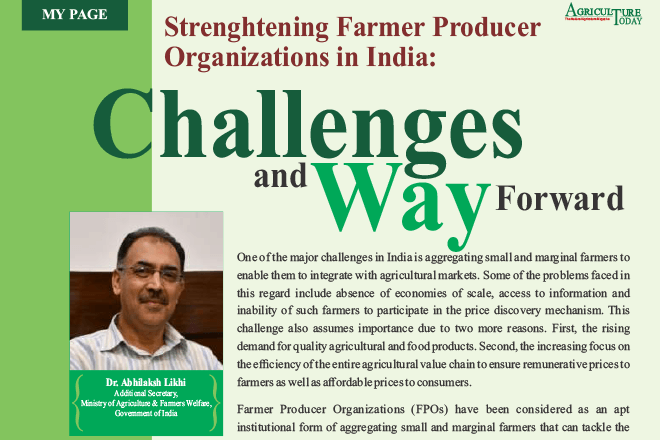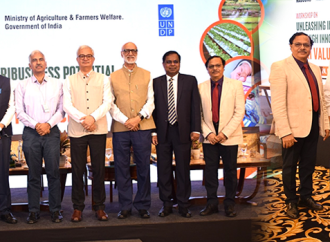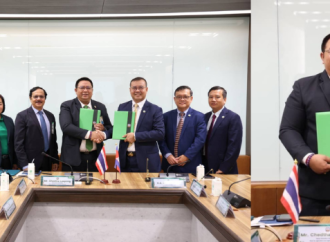One of the major challenges in India is aggregating small and marginal farmers to enable them to integrate with agricultural markets. Some of the problems faced in this regard include absence of economies of scale
One of the major challenges in India is aggregating small and marginal farmers to enable them to integrate with agricultural markets. Some of the problems faced in this regard include absence of economies of scale, access to information and inability of such farmers to participate in the price discovery mechanism. This challenge also assumes importance due to two more reasons. First, the rising demand for quality agricultural and food products. Second, the increasing focus on the efficiency of the entire agricultural value chain to ensure remunerative prices to farmers as well as affordable prices to consumers.
Farmer Producer Organizations (FPOs) have been considered as an apt institutional form of aggregating small and marginal farmers that can tackle the above challenge effectively. Farmer members, herein, are able to leverage their collective strength and bargaining power to access financial inputs leading to reduction of transaction costs. At the same time, they can tap high value markets and enter into partnerships with other entities on equitable terms.
An FPO is a corporate body under the Companies Act, Cooperative or Societies Act etc., and its activities could range from production, harvesting, processing, procurement, grading, marketing or exporting of primary produce. It, of course, provides sharing of profits and benefits among the members. Government of India encourages state governments to support FPO promotion under the Rastriya Krishi Vikas Yojana (RKVY). At the same time, the Small Farmers Agri Consortium (SFAC) and National Bank of Agriculture and Rural Development (NABARD) also promote such FPOs.
Experts opine that capacity building of farmer members of FPOs is of utmost importance to strengthen backward and forward linkages for myriad value chain interventions. Some of the key areas of action include skill development, business planning, extension management, technological platforms, market intelligence and exposure visits. There are several examples of best practices that foster such capacities and linkages.
Sahyadri Farmer Producer Company in Nasik, Maharashtra is an example of an entity that has built a value chain for small and marginal farmers. It exports grapes to the European Union, Russia and UAE and does domestic sales through 13 retail shops as well. It provides technical support to 6,600 farmers apart from undertaking aggregation, grading, sorting and packaging of the produce. Interestingly, the plots of its individual farmer members are geo tagged to allow the company to keep real time update of the crop’s growth. Besides, remote monitoring makes it possible to complete traceability of farmer’s produce by embedding the related information in its bar-coded packets.
The Government of Haryana has recently launched an innovatively modelled “Crop Cluster Development Program” to give a big push to primary processing facilities in horticulture crop clusters through FPOs. These clusters have been identified by surveying and mapping villages across the state for fruit and vegetable crops. Within these clusters, integrated pack houses for sorting and grading will be managed and run by FPOs. These will be bank appraised projects with credit link subsidy. Inhouse information technology linkages through e-services and deployment of outsourced cluster/district-based project extension managers is the program’s forte.
On the other hand, the Indian Society of Agribusiness Professionals (ISAP) is an example of a public-private partnership that extensively incubates FPOs covering five thousand villages in eleven states of the country to enhance crop productivity, provide access to quality inputs and promote value-added products. There are also Farmer Producer Companies nourished by non-governmental organizations such as PRADHAN in Madhya Pradesh in the area of backyard poultry.
The end goal of building capacities through such best practices, according to the “Doubling Farmers Income” (DFI) Committee Report, 2017 is fivefold. First, to promote range and reach of farmers into multiple markets. Second, maximize the volume of farm produce that reaches gainful end use without food loss. Third, improve inventory management in warehouses. Fourth, to promote online marketing platforms with role of the private sector. Fifth, maintain ease of business for cross border trade.
Outside the fold of FPOs, there are examples of numerous agri startups in the country such as Crofarm, Krishi Hub and Ninjacart that are using technology to introduce automated supply chain efficiencies and ensure better prices for small and marginal farmers. A distinctive feature in these agri start-ups is the use of artificial intelligence to predict demand from the core farmer data collected and enabling them to systematically trim waste. Without doubt, their mechanisms to ensure pricing transparency, demand prediction, product traceability and supply chain optimization need to be shared widely.
The way forward entails strengthening the last mile delivery architecture for FPOs. In addition to building capacities of farmer members, experts suggest identification of FPOs with contiguous land, preferred crop types and with scope for scalable production. Wholesale buyers that develop long term buying arrangements with FPOs should be incentivized, they add.
But above all, Krishi Vigyan Kendra’s (KVKs) located in Districts as farm focal points have to forge public private partnerships. These should enable FPOs in their area to be sensitized about innovative government programs like e-NAM (National Electronic Market) and provide the necessary ecology for value chain management. This will also be an effective “bottoms up” way to build linkages with Panchayati Raj Institutions (PRIs) and access funds and incentives offered by state governments.
Download PDF : Download















